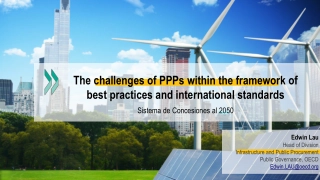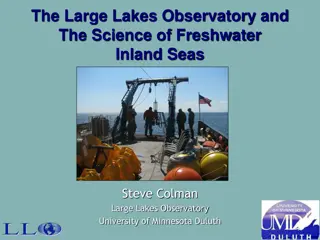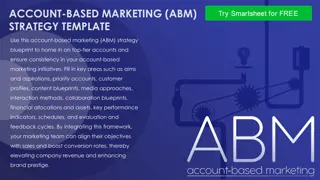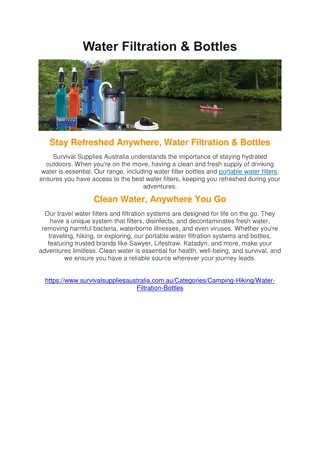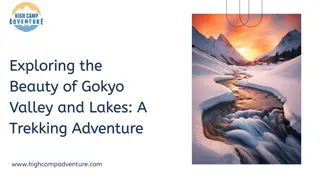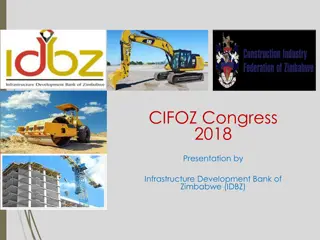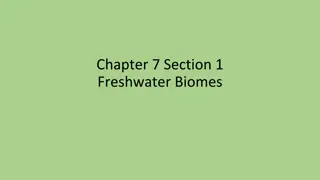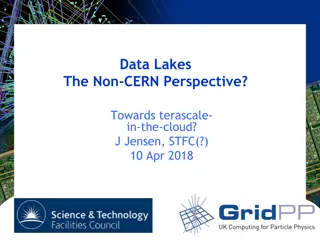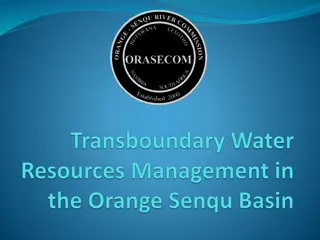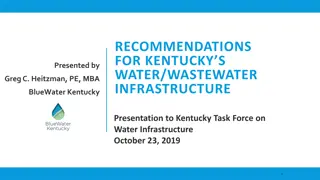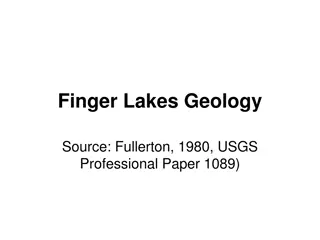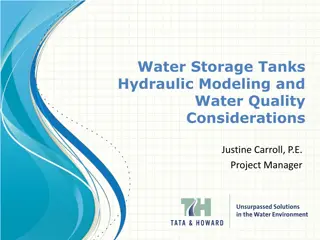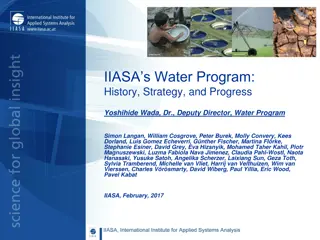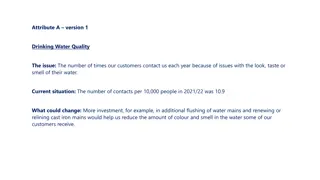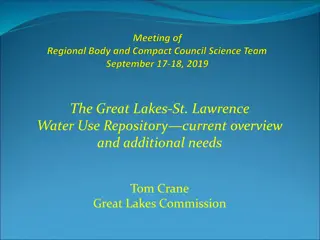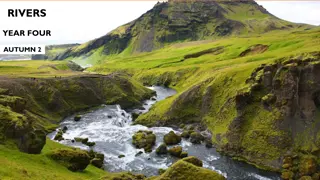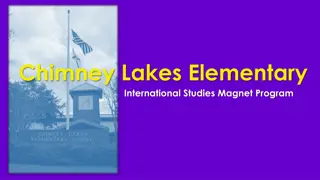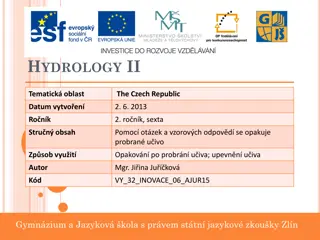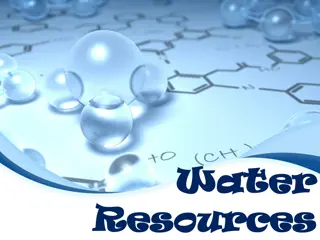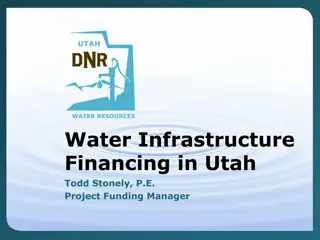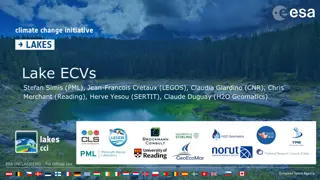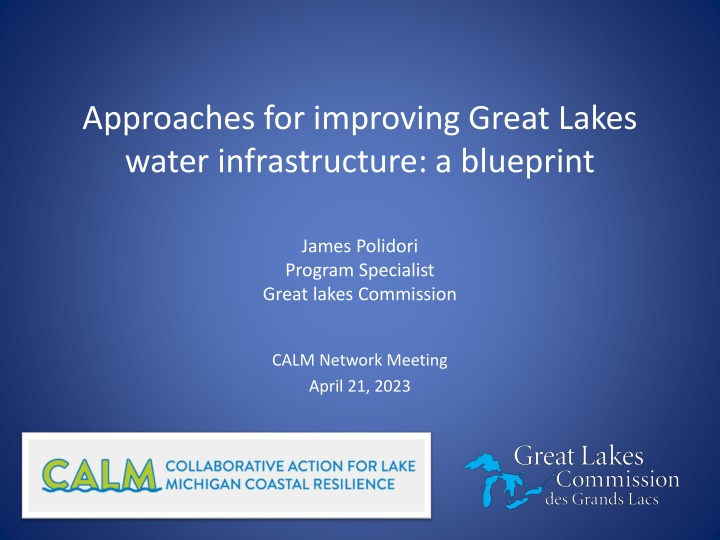
Approaches for Improving Great Lakes Water Infrastructure Blueprint
Great Lakes Commission, established in 1955, recommends policies for the balanced use of water resources. The blueprint discusses funding, regional working groups, and questions addressed to enhance infrastructure. It explores finalizing the blueprint through public feedback and focuses on water infrastructure priorities to address inequity and build climate resiliency.
Download Presentation

Please find below an Image/Link to download the presentation.
The content on the website is provided AS IS for your information and personal use only. It may not be sold, licensed, or shared on other websites without obtaining consent from the author. If you encounter any issues during the download, it is possible that the publisher has removed the file from their server.
You are allowed to download the files provided on this website for personal or commercial use, subject to the condition that they are used lawfully. All files are the property of their respective owners.
The content on the website is provided AS IS for your information and personal use only. It may not be sold, licensed, or shared on other websites without obtaining consent from the author.
E N D
Presentation Transcript
Approaches for improving Great Lakes water infrastructure: a blueprint James Polidori Program Specialist Great lakes Commission CALM Network Meeting April 21, 2023
What is the Great Lakes Commission? Established in 1955 by the Great Lakes Basin Compact Binational public agency Eight U.S. states and Two Canadian provinces Recommends policies and practices to: Balance the use, development, and conservation of the water resources of the Great Lakes Bring the region together to work on issues that no single community, state, province, or nation can tackle alone 2
Blueprint Background Funding support from the Joyce Foundation Regional Working Group formed Infrastructure Investment and Jobs Act (2021) GLC Resolution on Climate Resilience 3
Regional Working Group Comprised of stakeholders from multiple sectors, including: Academic institutions Non-profits Advocacy/activist organizations Government agencies Elected officials 4
Questions considered by working group Who must participate to reflect needs and information representative of the Great Lakes basin s residents? What are the shared challenges, and what steps can help address them? How do we ensure that approaches are equitable and further strengthen the region s resiliency to a changing climate? 5
Finalizing the Blueprint Public/partner feedback Listening session One Water Summit Online portal GLC Commissioners approved the Blueprint Calls and discussions with stakeholders 6
Blueprint Content Water infrastructure Includes services related to: Drinking water Wastewater Stormwater Blueprint layout presented in layers by priority area Fundamental goals Address inequity Build toward climate resiliency 7
Blueprint Priority Areas 1. Public health and safety 2. Community engagement and trust-building 3. Equitable distribution of investments and benefits 4. Asset management and workforce development Link to Blueprint 9
Regional Implementation Tactic Dynamic Map Highlights implementation tactics/success stories. Organizations, governments, and utilities putting blueprint approaches into practice Currently maintained by GLC staff Will be made available for public input of information If your organization is implementing blueprint approaches, please email jpolidori@glc.org Link to Mapper 10
Thank You! 11
Questions? 12

